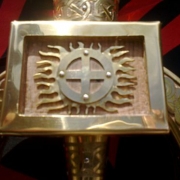Tree Planting – OR Guardians in Action
By Rory OR
Last November I took part in a tree planting organised between my kids school and The Woodland Trust, in our local park. The trees planted were Ash, Rowan, Hawthorn, Hazel, Beech and a single Oak that had been grown from an Acorn harvested from Windsor Great Park and dubbed the ‘Diamond Jubilee Oak’.
Jubilee Park where the planting took place had been given to the people of Ivybridge for the Diamond Jubilee of Queen Victoria and had been used by the people of the area to grow food during World War II during the “Dig for victory” campaign. It was a fitting place to plant these young trees, in this diamond Jubilee year as part of an ongoing campaign to replenish and replace much of the natural hedgerows and woodland that has been lost over the centuries. At one time a mainly forested country, England now has less than 24% of its native woodland compared with 37% in many European countries (according to various sources).
This has many causes from Dutch elm disease some years ago and now Ash die back. Not to mention all the more recently imported threats to our native flora. Trees were used wholesale for the shipbuilding industry of course, in the days of sail. Apparently it took over 400 Oak trees to build a ship of the line for the Royal Navy and when you consider the strength of that particular service in ages past along with the massive amounts of merchant shipping it is not particularly surprising, to me at least that our forests became denuded moorland quite rapidly. When you consider the time it takes an Oak tree to reach maturity this really was a rapid process indeed.
Of this remaining forest there are very little remaining Ancient woodlands that our ancestors would recognise and developers STILL to this day keep trying to rip out the trees for building land. These ancient woodlands, unchanged since the very dawn of our folk must be protected and encouraged to retake land where possible. One of the Woodland Trust workers who we were working with actually got quite excited about the idea of re-foresting Dartmoor.
Although Dartmoor is a fantastic place with great beauty and indeed is one of our national parks. It is a wholly man-made landscape. Firstly the deforestation and then, later tin mining changed the face of the moor over a few short centuries. What was ancient wood became rolling moor and this is how it remains today. Any young trees attempting to establish themselves on the periphery will not stand much chance as the land is used for grazing by local farmers.
Although not an OR event, I thought it a good opportunity to be out there wearing my colours so to speak and presenting us in a good light, doing a little for the community and more importantly, for Mother Jorth. It was a little unfortunate that Morgan (my daughter) had to be dressed in school uniform as the press turned up to photograph the kids and we could have had a little free publicity, but that the kids were involved and the reasons why explained to them was the most important thing on the day.
As a matter of interest I found out on the day that the recent crisis of the Ash die back affecting many of the Ash trees in this country is being handled by cutting down and burning any infected trees and not planting any new ones for the time being. When the disease seems to have run its course then a programme of collecting seed and planting saplings from apparently disease resistant specimens will take place.
Hail the Rite.
Hail our Holy Mother Jorth




 Hengest OR
Hengest OR
Leave a Reply
Want to join the discussion?Feel free to contribute!